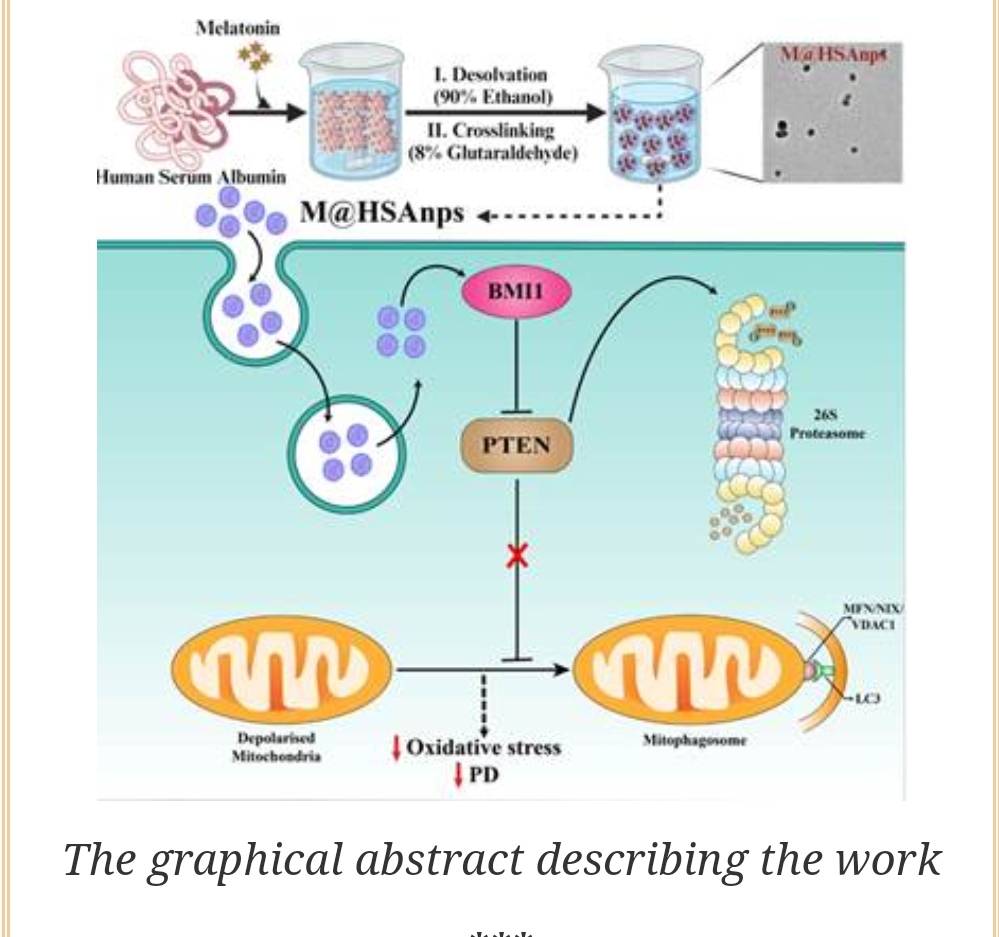Nano-formulation of Melatonin Shows Promise as Potential Treatment for Parkinson’s Disease.
New study reveals that nano-formulated melatonin may offer a breakthrough in mitigating oxidative stress and neurodegeneration associated with Parkinson’s disease.
New Delhi:
In a groundbreaking study, scientists have demonstrated that a nano-formulation of melatonin—an endogenous hormone produced by the brain in response to darkness—holds promising potential as a therapeutic solution for Parkinson’s disease (PD). Researchers have shown that this innovative treatment not only enhances antioxidative and neuroprotective properties but also could offer a novel approach to managing the neurodegenerative disorder that affects millions worldwide.
Parkinson’s disease, one of the most prevalent neurological conditions, results from the death of dopamine-producing neurons in the brain, primarily due to the accumulation of a protein called synuclein. While current medications provide symptomatic relief, they cannot cure the disease. This highlights the critical need for new treatments that can address the root causes of PD.
Recent studies have highlighted the role of Parkinson’s-related genes in a process called “mitophagy,” which helps clear dysfunctional mitochondria and reduce oxidative stress—key factors contributing to PD. Melatonin, a neurohormone known for regulating the sleep-wake cycle, has been identified as a potential inducer of mitophagy. This could provide a pathway for reducing oxidative stress in the brain, a hallmark of Parkinson’s disease.
However, despite its promise, the therapeutic potential of melatonin has been limited by challenges such as low bioavailability, premature oxidation, and difficulty crossing the blood-brain barrier. In a breakthrough study led by Dr. Surajit Karmakar and his team from the Institute of Nano Science and Technology (INST) Mohali, researchers have used a human serum albumin (HSA) nano-carrier to deliver melatonin directly to the brain. This novel nano-formulation significantly improves melatonin’s bioavailability and efficacy.
The study revealed that nano-formulated melatonin offers sustained release, enhancing its antioxidative and neuroprotective effects. In laboratory models, it was found to improve mitophagy—removing damaged mitochondria—and boost mitochondrial biogenesis. This was demonstrated in an in vitro model of PD, where nano-melatonin counteracted the toxicity induced by rotenone, a pesticide known to mimic Parkinson’s disease symptoms.
The therapeutic benefits of nano-melatonin are attributed to the sustained release and targeted delivery of the hormone to the brain. This results in higher therapeutic efficacy compared to traditional melatonin. The study also highlighted the role of BMI1, a key epigenetic regulator involved in gene expression. The overexpression of BMI1 following nano-melatonin treatment triggered mitophagy, helping protect neurons from degeneration.
These findings, published in the journal ACS Applied Materials & Interfaces, offer new insights into the molecular dynamics involved in the regulation of mitophagy and its role in reducing oxidative stress in Parkinson’s disease. Additionally, the study showed that nano-formulated melatonin protected neurons in rat models from rotenone-induced toxicity and promoted the health of TH-positive neurons—cells that are critical for dopamine production in the brain.
The breakthrough study underscores the potential of melatonin as a therapeutic candidate for Parkinson’s disease, offering a safer and more effective treatment option for patients. This research not only paves the way for new Parkinson’s disease therapies but also holds promise for treating other conditions where dysregulated mitophagy plays a significant role in disease progression.
As researchers continue to explore this promising treatment, nano-formulated melatonin could eventually become a vital tool in improving the lives of individuals living with Parkinson’s disease, offering hope for better management and, potentially, a cure.


